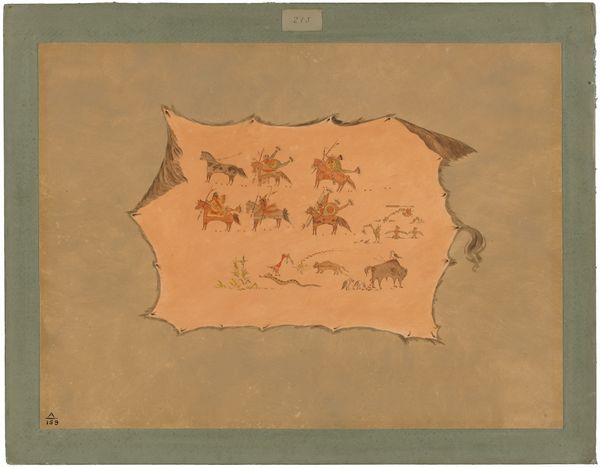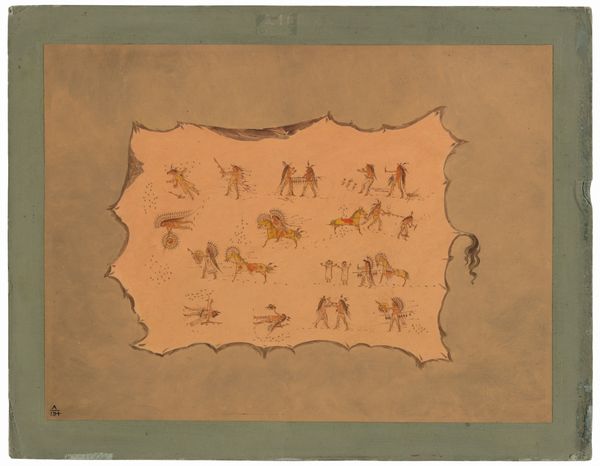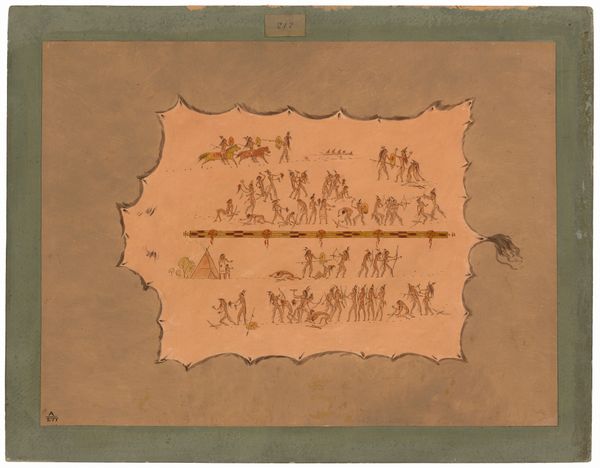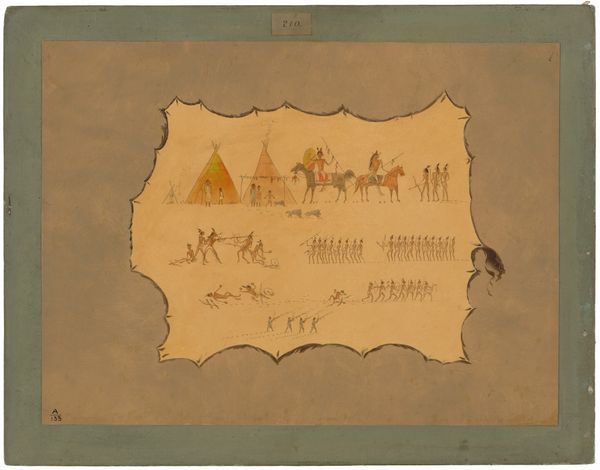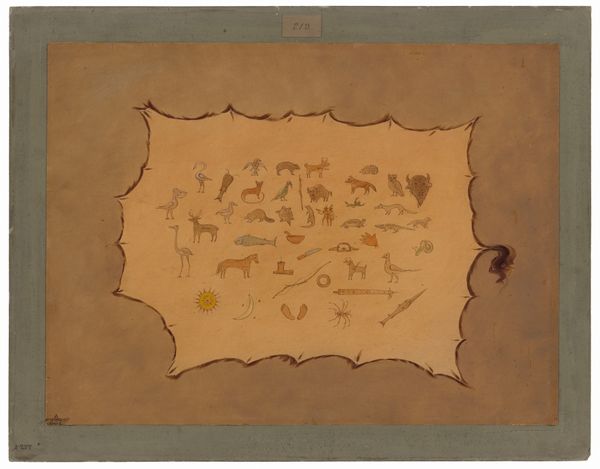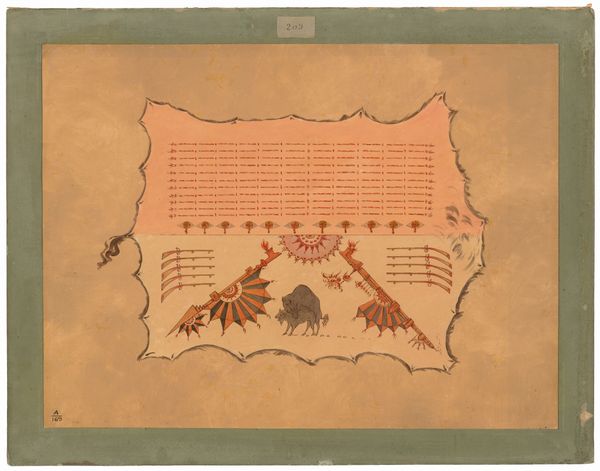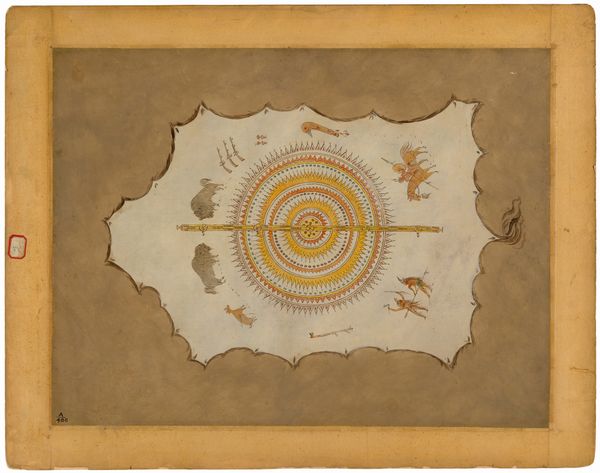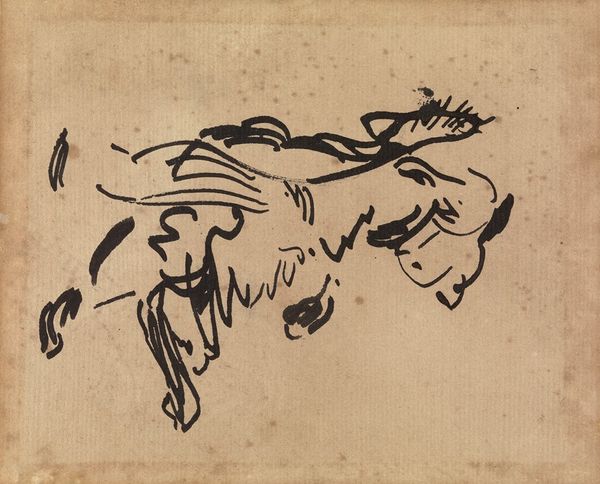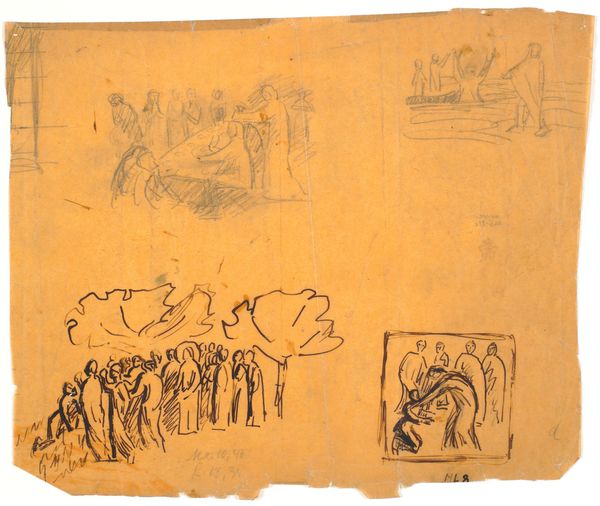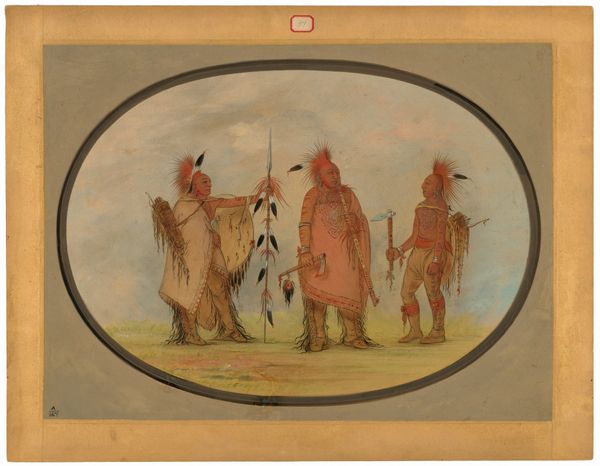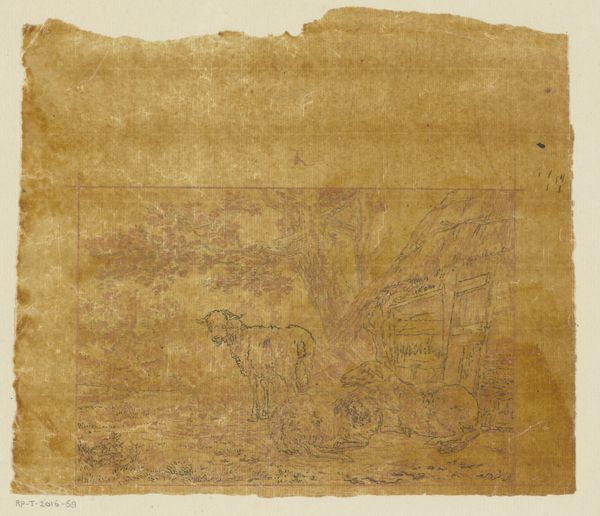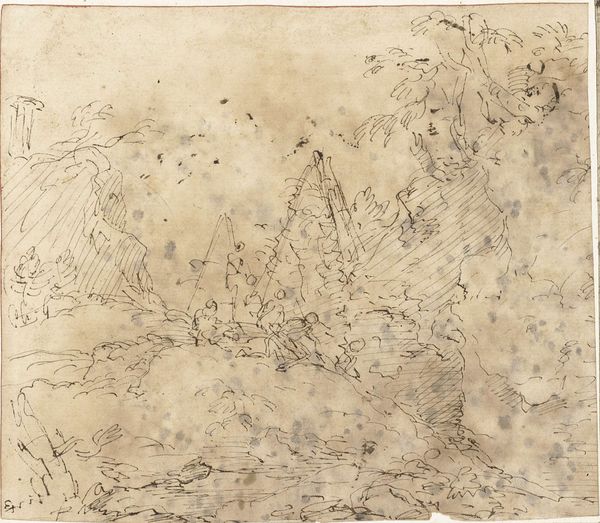
Facsimile of a Pawnee Doctor's Robe with Fantastic Professional Designs 1861 - 1869
0:00
0:00
drawing, painting, gouache
#
drawing
#
water colours
#
narrative-art
#
ink painting
#
painting
#
gouache
#
watercolour illustration
#
watercolor
Dimensions: overall: 46.6 x 61.2 cm (18 3/8 x 24 1/8 in.)
Copyright: National Gallery of Art: CC0 1.0
Curator: Let's discuss George Catlin's "Facsimile of a Pawnee Doctor's Robe with Fantastic Professional Designs," created sometime between 1861 and 1869. What's your initial take? Editor: It feels strangely muted and evocative. The imagery hints at powerful narratives and ceremonies. Curator: Catlin worked in watercolor and ink on paper to mimic the original robe. This instantly shifts the materiality, right? The move from a tanned hide to paper transforms the artifact into something more easily consumed and circulated. Editor: Absolutely, it alters its inherent value and function. Indigenous robes held deep cultural and spiritual significance, weren’t mere clothing items. The transfer to paper, then, implicates broader colonial patterns of appropriating and representing Indigenous cultures, transforming sacred objects into consumable curiosities. Curator: Right. And in doing so, the work elides labor; the work to transform a raw hide into a canvas ready for artistic work, and that loss must also imply an erosion of tradition, right? Editor: Precisely. These "fantastic professional designs," as they are called, likely represent important Pawnee knowledge and beliefs. Seeing them divorced from their original context invites scrutiny regarding who gets to interpret and share these stories, as Catlin was neither Pawnee nor immersed in the culture himself. Curator: I am struck by the ways Catlin’s process and its end product distances audiences, making them blind to the means and social relations in this art production. Editor: Agreed. Catlin's work operates as a colonial project, further cementing asymmetrical power relationships and commodifying Indigenous knowledge for a Western audience. Curator: The use of materials is deliberate. While paying homage to the robes as meaningful artifacts, the choice also reflects available tools for image production. It serves the function and distribution goals within Catlin's overall project. Editor: Ultimately, the painting can serve as a cautionary example that can teach audiences about respecting different cultural practices and grappling with histories of power dynamics implicit when different traditions meet in material culture. Curator: Definitely a case of studying the processes and materials to unpack a complex network of cultural and material exchanges!
Comments
No comments
Be the first to comment and join the conversation on the ultimate creative platform.
